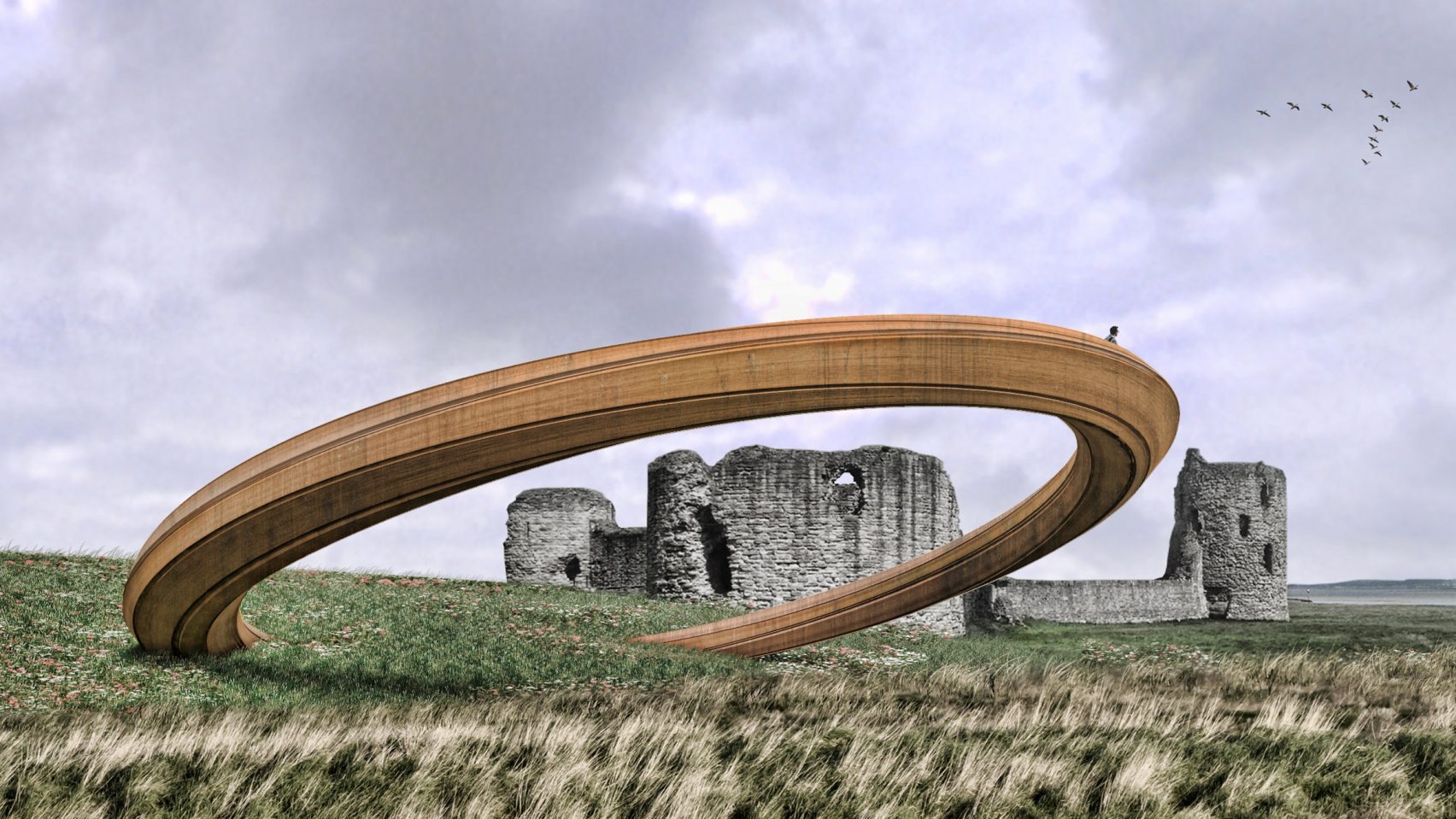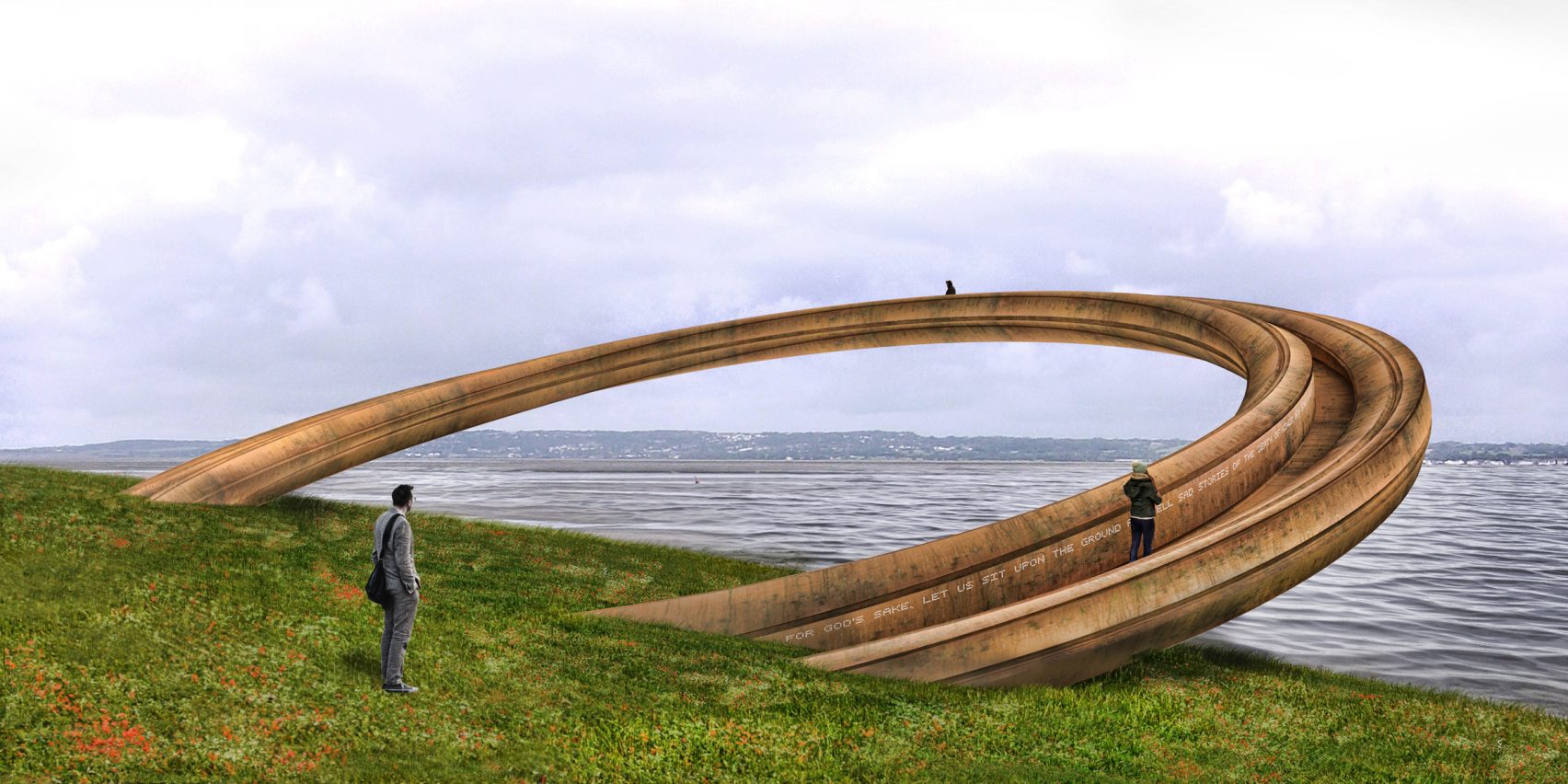The Welsh government pauses plans for the installation of a new iron ring sculpture at Flint Castle, in Wales, following the objections issued by the local community. The sculpture is meant to be a signature art piece in celebration of Wales’ “Year of Legends”, a campaign lead by the government to attract more tourists to the country in 2017.
The London-based George King Architects has won the competition held by the government to design the sculpture. Their proposed design comprised a large weathered steel ring, embedded in the Earth from one side and raised at the opposite to act as an observatory, viewing both the castle and the River Dee.

Courtesy of George King Architects
The selected design has raised controversy within the local community which believes that it carries a reference to the “iron ring” of castles built by King Edward I, in the medieval period, to “oppress” Welsh people. An online petition was signed by more than 7,000 community members, calling for the project to be scrapped. Accordingly, Economy Secretary Ken Skates announced that the project will be paused and the design will be reviewed.
“We have listened and recognized the strength of feeling around the proposed art installation at Flint Castle and feel it is only right that we now take a pause and review the plans for the sculpture,” said Skates. “Working closely with local partners we will continue to work on proposals for developments at Flint, including reviewing new visitor facilities.”

Courtesy of George King Architects
Designer George King, on the other hand, explained that the ring represented the “intimate relationship between the medieval monarchies of Europe and the castles that they built.” The inclination of the ring refers to handing down of the British crown from one medieval dynasty to the other. “The sculpture will take a precariously balanced form, half-buried beneath the ground, half projecting into the air, to demonstrate the unstable nature of the crown,” said George King. The location of the sculpture itself is famous for witnessing the historic event of King Richard surrendering his crown to King Henry IV.
The ring-shaped sculpture would cost about £395,000, and it would be 7 meters in height and 30 meters in diameter. It was planned to be fitted with LED lighting and to carry inscriptions chosen by the local community. “The sculpture has been carefully designed to work at many scales. From afar its striking, iconic form resembles a giant ancient artifact, washed up on the shore of the Dee Estuary,” said King. “Its scale and dynamic appearance mean that it will become an instantly recognizable landmark for the area. However, as you approach the sculpture it becomes obvious that the piece is more than a sculpture.”
The sculpture was supposed to be installed in spring 2018, for the visitor to walk along its round path and observe the scenery.

